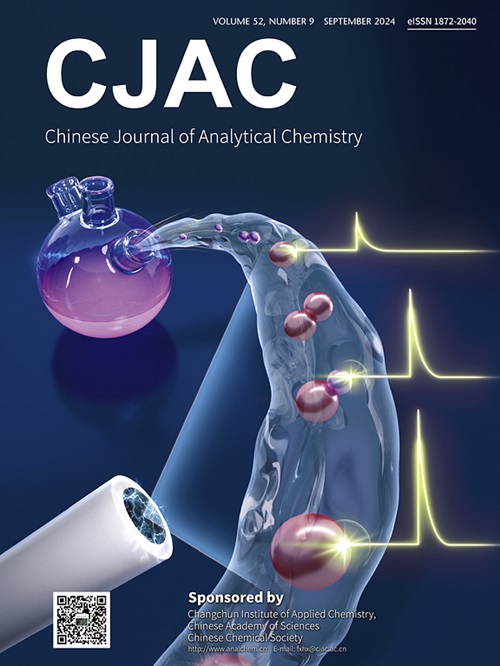交联壳聚糖包覆氧化亚铜微球的一步法原位吸附碘化物
IF 1.3
4区 化学
Q4 CHEMISTRY, ANALYTICAL
引用次数: 0
摘要
核电和放射性医疗产生的放射性碘废物已成为一个严重的环境问题,引起了对公众健康的关注。交联壳聚糖通过静电吸引吸附碘离子,但吸附效率有限。为了获得更好的吸附性能,采用一步原位液相法制备壳聚糖包覆氧化亚铜微球(Cu2O@CM)。与环氧氯丙烷交联的Cu2O@CM-e和与戊二醛交联的Cu2O@CM-g均表现出粗糙的球形形貌,在10分钟内对Cu2O@CM-e和Cu2O@CM-g的快速除碘能力分别为0.1843 mmol/g和0.1819 mmol/g。吸附过程通过物理多层吸附和化学单层吸附的结合进行,自发和吸热驱动。经过四次再生循环后,Cu2O@CM-e和Cu2O@CM-g的吸附效率几乎相同,突出了它们的可重复使用性。考虑到Cl -和CO32 -的干扰,两种吸附剂对竞争离子都有明显的选择性。因此,这两种吸附剂在去除碘废物方面显示出良好的潜力本文章由计算机程序翻译,如有差异,请以英文原文为准。

Crossed-linked chitosan coated cuprous oxide microspheres for iodide adsorption via one-step in-situ generation
Radioactive iodine waste generated from nuclear power and radioactive medical treatments has become a serious environmental issue, raising concerns about public health. Cross-linked chitosan adsorbed iodide anions through electrostatic attraction yet limit-efficiently. To achieve better adsorption performance, chitosan-coated cuprous oxide microspheres (Cu2O@CM) was proposed via one-step in-situ liquid-phase method. Both Cu2O@CM-e cross-linked with epichlorohydrin and Cu2O@CM-g cross-linked with glutaraldehyde, performing rough and spherical morphology, exhibited rapid iodine removal capacities of 0.1843 mmol/g for Cu2O@CM-e and 0.1819 mmol/g for Cu2O@CM-g within just 10 min. The adsorption process occurred through a combination of physical multilayer adsorption and chemical monolayer adsorption, driven spontaneously and endothermically. After four regeneration cycles, Cu2O@CM-e and Cu2O@CM-g maintained almost identical adsorption efficiencies, highlighting their reusability. Considering the interference of Cl– and CO32–, both adsorbents showed significant selectivity towards competing ions. Thus, both adsorbents showed promising potential for the removal of iodine waste
求助全文
通过发布文献求助,成功后即可免费获取论文全文。
去求助
来源期刊
CiteScore
3.60
自引率
25.00%
发文量
17223
审稿时长
35 days
期刊介绍:
Chinese Journal of Analytical Chemistry(CJAC) is an academic journal of analytical chemistry established in 1972 and sponsored by the Chinese Chemical Society and Changchun Institute of Applied Chemistry, Chinese Academy of Sciences. Its objectives are to report the original scientific research achievements and review the recent development of analytical chemistry in all areas. The journal sets up 5 columns including Research Papers, Research Notes, Experimental Technique and Instrument, Review and Progress and Summary Accounts. The journal published monthly in Chinese language. A detailed abstract, keywords and the titles of figures and tables are provided in English, except column of Summary Accounts. Prof. Wang Erkang, an outstanding analytical chemist, academician of Chinese Academy of Sciences & Third World Academy of Sciences, holds the post of the Editor-in-chief.

 求助内容:
求助内容: 应助结果提醒方式:
应助结果提醒方式:


